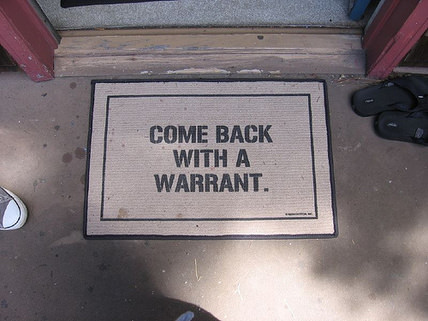In 2004, then-Sheriff Joe Arpaio’s SWAT team in Maricopa County, Ariz., raided a suburban home looking for illegal firearms.
The raid was a comedy of ineptitude.
The officers drove their armored vehicle into a parked car on the street. They changed into military-style uniforms on the lawn, leading a neighbor to conclude that they might have been amateur paintballers or even gang members. One of the many tear gas canisters police fired into the home apparently sparked a fire and set the home ablaze. A dog trying to flee the fire was scared back into the home, where it died.
Administration should learn from mistakes of Arpaio. Disastrous SWAT raids added proof that supplies not only unnecessary, but dangerous.
Instead of a cache of illegal weapons, the raid recovered an antique shotgun and a legally owned 9mm handgun, and officers made only one arrest — for a failure to appear in court over traffic violations.
It should go without saying that military weapons and tactics should be reserved for the most pressing circumstances. Yet the Trump administration is taking the country backward by again giving police departments access to the most dangerous artillery that is often unnecessary for local officers.
This week, Attorney General Jeff Sessions announced the reversal of an Obama-era rule that limits the transfer of certain military equipment to state and local police agencies.
The Pentagon’s 1033 program has provided military surplus equipment to state and local law enforcement agencies for a couple of decades. The Obama administration made a slight modification to the program by banning the transfer of some military equipment such as high-powered rifles, grenade launchers, bayonets, and some armored vehicles and camouflage uniforms.
Militarized law enforcement came under intense scrutiny in 2014 after Missouri teen Michael Brown was killed by police officer Darren Wilson. Police met protesters with tanks, tear gas and military-grade weapons, escalating an already tense situation. Observers could have easily been forgiven for mistaking the officers for occupying soldiers.
One photo from the protest quickly went viral and came to symbolize the oppressive, dangerous nature of overly militarized law enforcement. It showed multiple officers in full military gear, pointing riffles at a young, black male who was holding his hands in the air. The officers seem to be saying, do what we say or we’ll kill you.
That kind of military-tinged imagery is exactly what led some police chiefs to renounce their participation in the weapons program. Brandon del Pozo of Vermont’s Burlington Police Department said the equipment was starting to twist the perspectives of his officers:
“We have the resources to handle all but the most inconceivable public safety scenarios. Amassing a worst-case scenario arsenal of military equipment results in officers seeing everyday police work through a military lens. When I realized what a small role the military played in equipping our police, I concluded it was better to return the items.”
Del Pozo has his finger on a fundamental question: Can police departments be flooded with military weaponry and technology without blurring the distinction between law enforcement work and military occupation?
The history of SWAT teams, like the one in Maricopa County, provides an ominous answer.
SWAT teams originated as a response to demanding and dangerous circumstances such as hostage situations, civil unrest and active shooters. But as traditional law enforcement goals gave way to the incentives of the war on drugs, the mission of militarized police units began to creep. Rather than being reserved for emergency situations, the vast majority of SWAT raids today result from search warrants, usually for drugs.
Abuses of military tactics and equipment are inevitable. Police officers, like all people, respond to incentives.
We can, of course, imagine unlikely scenarios in which the police might need .50 caliber rifles, but there is a cost to turning responses to outlandish possibilities into policy prescriptions. Without adequate transparency, accountability and training, that cost will continue to be paid in lives.










